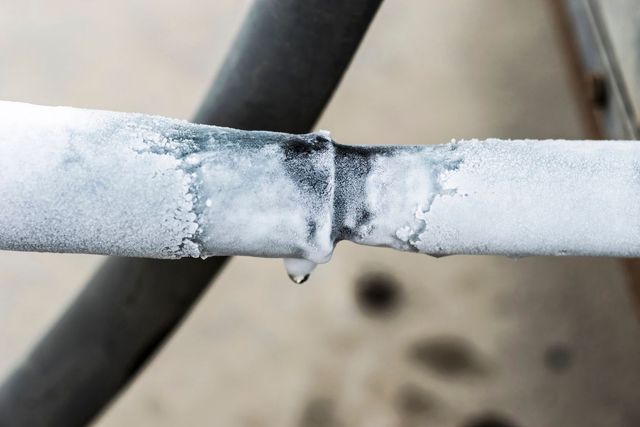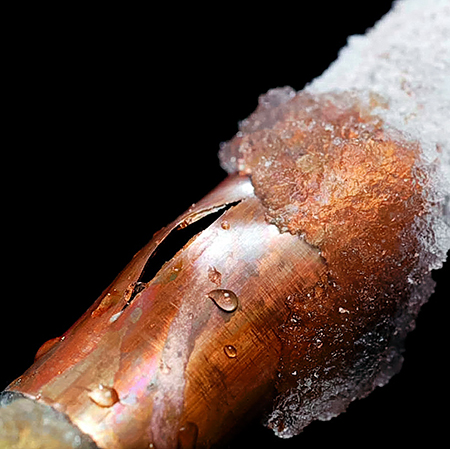Identifying a Frozen AC Pipe - Efficient Fixes for House Air Conditioning Systems
Identifying a Frozen AC Pipe - Efficient Fixes for House Air Conditioning Systems
Blog Article
Are you hunting for facts and techniques concerning What Causes AC Pipes To Freeze??

Introduction
Discovering that your air conditioning pipe is frozen can be concerning, particularly during hot summer months when you depend on your air conditioning unit the most. Understanding what to do in such a situation is crucial to prevent further damage to your cooling system and ensure your convenience inside.
Recognizing the Causes
Numerous aspects can contribute to the freezing of an air conditioning pipe. Understanding these reasons can assist you deal with the issue effectively.
Lack of Airflow
One common source of an icy air conditioning pipe is inadequate air movement. When the airflow over the evaporator coil is restricted, it can trigger the coil to drop below freezing temperature level, causing ice formation on the pipe.
Reduced Refrigerant Levels
Insufficient cooling agent degrees in your air conditioner system can also result in a frozen pipe. Low refrigerant levels can trigger the stress in the system to go down, resulting in the freezing of moisture on the evaporator coil.
Winter Conditions
In colder climates, freezing temperature levels outside can contribute to the freezing of a/c pipelines. If your air conditioning system is not effectively insulated or if there are leaks in the ductwork, cold air can infiltrate the system, triggering the pipeline to ice up.
Dirty Air Filters
Unclean or clogged air filters can restrict air flow in your air conditioning system, causing different concerns, consisting of an icy pipeline. It's vital to change or clean your air filters on a regular basis to make certain appropriate air movement and prevent ice accumulation.
Indicators of a Frozen Air Conditioner Pipe
Acknowledging the indicators of a frozen AC pipeline is vital for timely action.
Lowered Airflow
If you observe a significant decline in air flow from your vents, it could suggest a frozen pipeline.
Ice Buildup on the Pipe
Visible ice build-up on the refrigerant line or the evaporator coil is a clear sign of a frozen AC pipeline.
Weird Sounds from the Unit
Unusual sounds, such as hissing or gurgling, coming from your AC system can indicate that there's ice existing on the pipeline.
Immediate Actions to Take
When faced with an icy air conditioner pipe, it's necessary to act promptly to prevent additional damages to your air conditioning system.
Turning off the air conditioning
The primary step is to switch off your ac system to avoid the system from running and worsening the problem.
Checking for Blockages
Evaluate the location around the interior system for any obstructions that might be obstructing air flow, such as furniture or drapes.
Defrosting the Pipe
You can utilize gentle methods like positioning towels taken in warm water around the frozen pipeline to assist thaw it slowly.
Safety nets
Taking preventive measures can aid prevent future occurrences of an icy AC pipeline.
When DIY Methods Fail
If your attempts to thaw the pipeline or address various other problems are not successful, it's time to contact a professional.
Value of Hiring a Professional HVAC Technician
A qualified HVAC specialist has the proficiency and devices essential to diagnose and repair concerns with your air conditioner system safely and successfully.
Normal Maintenance Checks
Set up regular maintenance get in touch with a specialist HVAC technician to guarantee that your a/c system is running effectively.
Altering Air Filters
Consistently change or cleanse your air filters to stop air flow restrictions and preserve ideal performance.
Protecting Exposed Pipes
If your air conditioner pipelines are exposed to cool temperature levels, take into consideration protecting them to avoid cold throughout winter months.
Seeking Professional Help
If DIY techniques fall short to resolve the issue or if you're uncertain regarding exactly how to proceed, it's finest to seek support from a qualified HVAC service technician.
Final thought
Taking care of a frozen air conditioning pipe can be an aggravating experience, but knowing just how to react can assist minimize damages and recover comfort to your home. By understanding the reasons, acknowledging the signs, and taking punctual action, you can effectively resolve the problem and prevent future events.
What to Do If Your AC Line Is Frozen
Make Sure All Supply and Return Air Vents Are Open
If you notice problems with airflow, the first thing you should do is check your supply and return vents. Supply vents distribute clean, conditioned air throughout your home. As this air becomes stale, it’s pulled into the return vent, where it’s reconditioned before being sent back out through the supply vent.
When these vents are closed, air won’t flow in the home. Before examining your AC, check the vents in every room and ensure they’re all open.
Check for a Dirty Air Filter
Another possible cause of limited airflow is a dirty air filter. Your air conditioner’s filters catch elements you don’t want to breathe in, such as dirt and dust. Over time, filters can become clogged, ultimately blocking air from flowing in and out. The lack of airflow can then cause the entire coil to freeze and will completely restrict any air from moving through it. The AC may need to be powered off for one to two days to allow the coil to thaw after replacing the filter to allow proper functioning of the unit. This debris can also accumulate on your AC’s evaporator coil, requiring a more serious repair. In general, air filters should be cleaned regularly (about every two weeks).
Assess Your Outdoor Unit
In addition to checking your AC, assessing the outdoor unit is a good idea. Also known as the condensing unit, it works with your interior unit to release heat outside. An issue with the outdoor unit can result in rising internal temperatures.
Overgrown Shrubs or Clogged Leaves
From leaves and twigs to shrubs and debris, there’s no shortage of outdoor elements that can accumulate around your condensing unit. When these elements get lodged inside the unit, they can block airflow. Fortunately, removing the blockage can solve the problem.
Sounds of a Broken Fan
Shrubs and leaves aren’t the only things that can impede your outdoor unit’s airflow. If the fan is broken, the unit won’t be able to properly get rid of heat — which means the internal temperature won’t go down. First, make sure the fan is spinning. If it is, check for the following sounds of a broken fan:
Buzzing Rattling Screeching Hissing Clicking Preventative Measures
Nobody wants to deal with a frozen AC line. In addition to causing problems with your air conditioner, they require professional repairs. On the bright side, there are preventative measures you can take to help ensure this issue doesn’t arise in the first place.
https://www.coopergreenteam.com/blog/what-to-do-if-ac-line-frozen

As a fervent reader on Air Conditioner Frozen? How To Fix your Frozen AC Line, I think sharing that short article was a good thing. Appreciated our posting? Please share it. Let another person check it out. We cherish reading our article about How can I fix an air conditioner’s frozen pipe?.
Appointment Report this page